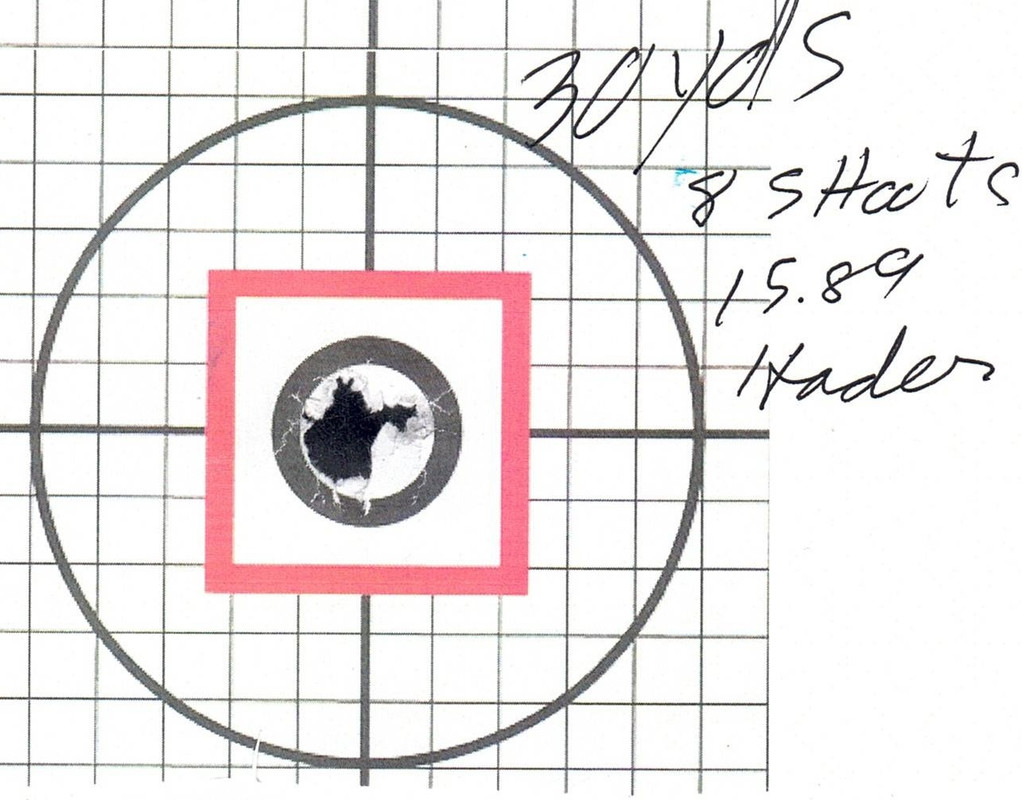Well clearly there is the accuracy of the gun, while trying to minimize the impact of the shooter (benchrested, perfect conditions, all the time in the world for a good shot, and eliminating ones that are known to be bad due to the shooter like with bad trigger pulls), and then there is the accuracy of the gun with the shooter in field or hunting conditions (imperfect rest, constraints on the shot, everything counts etc.). I like to know the accuracy of the gun first, and that is what the rest of this speaks to.
OK – let me go ahead and proclaim this up front: I am a nerd that likes to geek out on data.

With that said, I’ll now say that I HATE group size as a the key measurable when talking about accuracy of guns, and here is why – it “throws away” most of the useful information! How? Because we take a certain number of shots (typically 5, but 10 is better – but people don’t like 10 because the groups are bigger . . . ) all of which carry usable information about how far off the POA they fall, but we throw most of it away keeping just the max spread across the group. What a waste . . . .
So when I want to really understand how a gun shoots, I set up and wait to run a true test of the gun, shot in a way to minimize me and conditions as an influence. To do this I need to wait for shooting conditions that are dead still – or at least as dead still as we can get (there is no such thing as no air movement, but we can get close, typically in the morning on a very calm day). When I have those conditions, I shoot:
- Far enough for the gun that there will be a spread in the results – 50 yards is the shortest that I like to do this, as even with very good guns we tend not to get many shots at the exact same POI
- Take 100 shots at 100 individual bulls
- Use target paper flat against smoot duct seal in the target trap (this gives holes that look like wadcutters at target paper for best measurement)
- With every shot taken, with the POA trying to be perfectly on the center dot of the bull, seek no called fliers (if there is one pulled, it is dropped from the test and replaced). This is about the gun, not the shooter
- Measure every POI against POA to the closest tenth of a millimeter in the X and Y directions
- Enter all data into Excel for analysis, consisting of:
- Determine average offset needed to have the average on the POA (great for really nailing down scope settings
- Plot each individual shot without “losing” data in the “large hole” view that is created with groups
- Generate statistical models that allow for determining random (and thus average) groups of various size
Anyways, when you do this, you TRULY understand what a gun can do. Then you can add your own variation on top of that as you work on your own contribution to the system variation.
The plot below shows the kind of results this can yield. This particular gun puts roughly 50% of all shots inside MOA, and while that does not sound great, do know that mathematically this results in an average of 5 shot groups being under 1 MOA (statistically, the smallest 50 yard 5 shot group should be about 0.1” ctc , and the largest at just over an inch, but the average would be 0.58” at 50 yards – or 0.76” for ten shot groups).
As you can guess, group size is “perfectly acceptable” once one understands what drives it and what it means – but it is a lousy first order metric. Even on a gun shooting as well as this one was, with an average group size under 1 MOA, it sshould be expected to have ~25% of the shots land outside 1 MOA from the POA at 50 yards – if everything else was perfect (which it almost never is in real life) . . .
One thing that I have learned from this type of work and analysis is that most of what people think of as “extreme accuracy” is nowhere near as accurate as they think it is . . . .
View attachment 349381